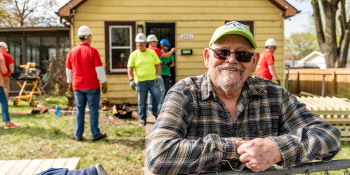Urban Institute report assesses Habitat's advocacy wins
Discover insights, reports and data on how Cost of Home, our five-year U.S. housing advocacy campaign, helped affiliates and communities connect millions of Americans to affordable homes.
Discover insights, reports and data on how Cost of Home, our five-year U.S. housing advocacy campaign, helped affiliates and communities connect millions of Americans to affordable homes.
Our daily build progress photos will give you a frontrow seat to this week’s action as as hosts Garth Brooks and Trisha Yearwood work alongside homeowners and volunteers to build decent, affordable homes in Charlotte, North Carolina.
Habitat for Humanity designs homes that are as unique, creative and strong as the people who live in them. The 2023 Habitat House Design Contest, generously sponsored for a third year by Simpson Strong-Tie, recognizes 10 Habitat affiliates for their remarkable designs across a range of categories, including affordability, sustainability and more.
Habitat for Humanity designs homes that are as unique, creative and strong as the people who live in them. Whether it’s creating veteran-inclusive spaces in New Jersey, maximizing land use in California or constructing hurricane-resistant residences in Florida, Habitat affiliates in the U.S. design innovative homes to best serve their communities.
The annual Habitat House Design Contest, generously sponsored for a third year by Simpson Strong-Tie, recognizes Habitat affiliates for their excellence in design across a range of categories, including accessibility, affordability, durability and many more.
Read on to learn more about the 2023 winning designs.
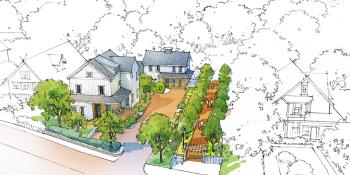
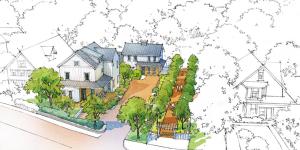
The Urban Instititute conducted interviews with stakeholders covering seven different policies that were supported directly or indirectly by Cost of Home. Participants shared background and details on the policies they supported as well as the impact of those policy changes on their communities.
Enjoy this special video message as a thank-you for partnering with us to build homes, communities and hope!
“It means the world to me. It gives me the actual ability to have my son come over without me having to physically help him up the steps and everything else,” says Robert, who was able to build a new ramp for his home with the support of Habitat and the Wells Fargo Foundation.
Robert and Glenda were married in the backyard of their Des Moines home and spent more than two happy decades together under its roof. Throughout the years, Robert, a former construction superintendent, made updates like installing kitchen cabinets, adding new flooring and building a walk-in closet for Glenda. “I wanted to make the home safe and more efficient for her,” Robert says.
Before Glenda passed away, Robert promised her he would build a new ramp for the front of their home. The couple’s two children, 46-year-old Mario and 42-year-old Angela, use wheelchairs. “I put up a temporary ramp to help them get up onto the porch, but it was just a short ramp so it was pretty steep,” Robert says. “Any time my son or daughter came to visit, I had to help them up that ramp and then help them up the step because it was still an additional step to get into the house.”

Robert and his son, Mario (second from left), stand in front of their home with Mary Mack, CEO of consumer and small business banking for Wells Fargo and Habitat for Humanity International board member, and Michael Cox, vice president of individual giving at Habitat.
Robert hoped to install a new ramp that would be easier for his children to navigate independently – and fulfill his promise to Glenda – but after a financial setback he couldn’t afford to build one. He’d learned about Greater Des Moines Habitat’s home preservation program and reached out to see if they could help. The program helps make repairs affordable for homeowners, so they can preserve their homes for generations to come.
Robert’s ramp was built with financial and volunteer support from the Wells Fargo Foundation as part of a $7.5 million donation to Habitat for Humanity International through the Wells Fargo Builds program. Volunteers from Wells Fargo Builds worked together to dig holes, cut wood and assemble his ramp.
“Apart from getting my hands dirty and really feeling that sense of accomplishment, I loved hearing Robert’s story,” says Abby Spann, a lead business execution consultant for Wells Fargo who has volunteered with Greater Des Moines Habitat for nearly 14 years. “He has a lot of pride in his home, memories he’s had in his home, his family being present in that home. And he has a really strong conviction in the importance of safe and accessible housing.”
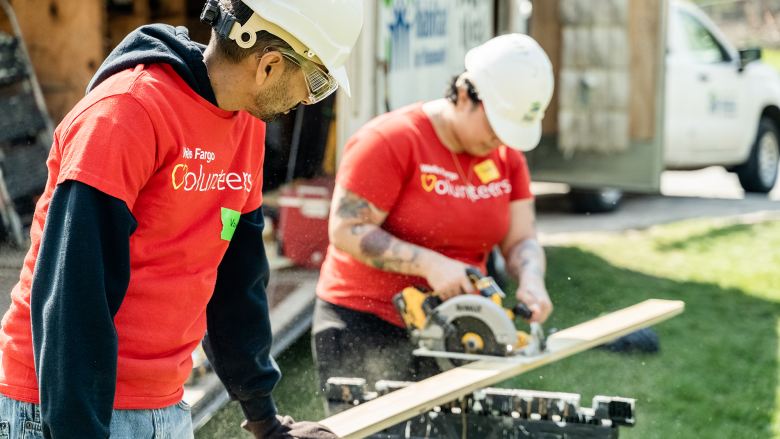
Wells Fargo Builds volunteers help Robert build a new ramp for his home.
“Robert owns his home, he loves his home, he loves his neighborhood, and he really wants to continue to be a part of that,” echoes Lance Henning, Greater Des Moines Habitat’s chief executive officer. “The challenges of moving somewhere else would be a lot for him, like a lot of families in our home preservation program that we work with. They own their home and can afford to be there, but they may need some assistance around maintenance.”
Now that Robert has a new ramp, his children can visit more easily. “It means the world to me. It gives me the actual ability to have my son come over without me having to physically help him up the steps and everything else,” Robert says. “He’s able to come in, we visit, and he’s able to leave on his own.”
On the same day Robert’s ramp was built, Wells Fargo Builds volunteers also helped three other homeowners make repairs to their homes. “I think it’s really important to Wells Fargo to act both at the macro and micro level to help solve affordable housing issues,” Abby says. “At the macro level, funding is provided through the Wells Fargo Foundation. But, also, the small actions — like our team volunteering to help Robert and his family — made a huge difference for him. With the support of companies like Wells Fargo, those small actions really can make a big difference for our communities.”
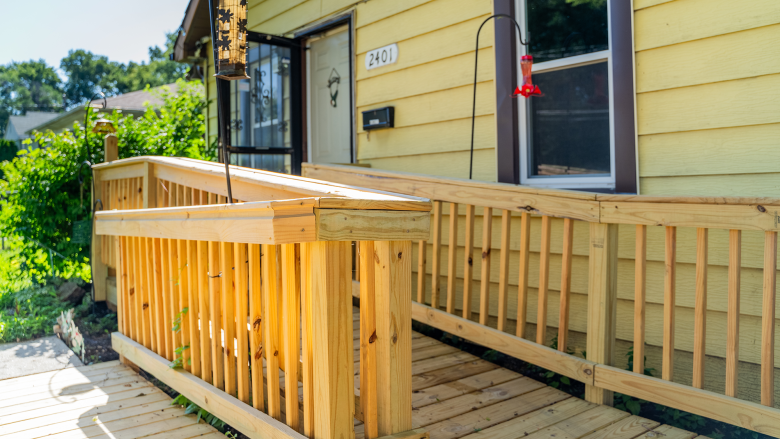
Robert’s home is more accessible thanks to a new ramp built with the help of Wells Fargo Builds volunteers.
Mario is moving back home soon, and Robert is thrilled to have the new ramp in place for him. “On the landing, there’s enough room for me to have two chairs. I can be out there with somebody else, and my son still has the ability to come around that turn without any problem,” Robert says.
The ramp also has a special place in Robert’s heart because it’s the perfect spot for hummingbird-watching – something he used to do with Glenda. “So that’s kind of cool. You know, having a place to sit and watch hummingbirds buzz around your head.”
